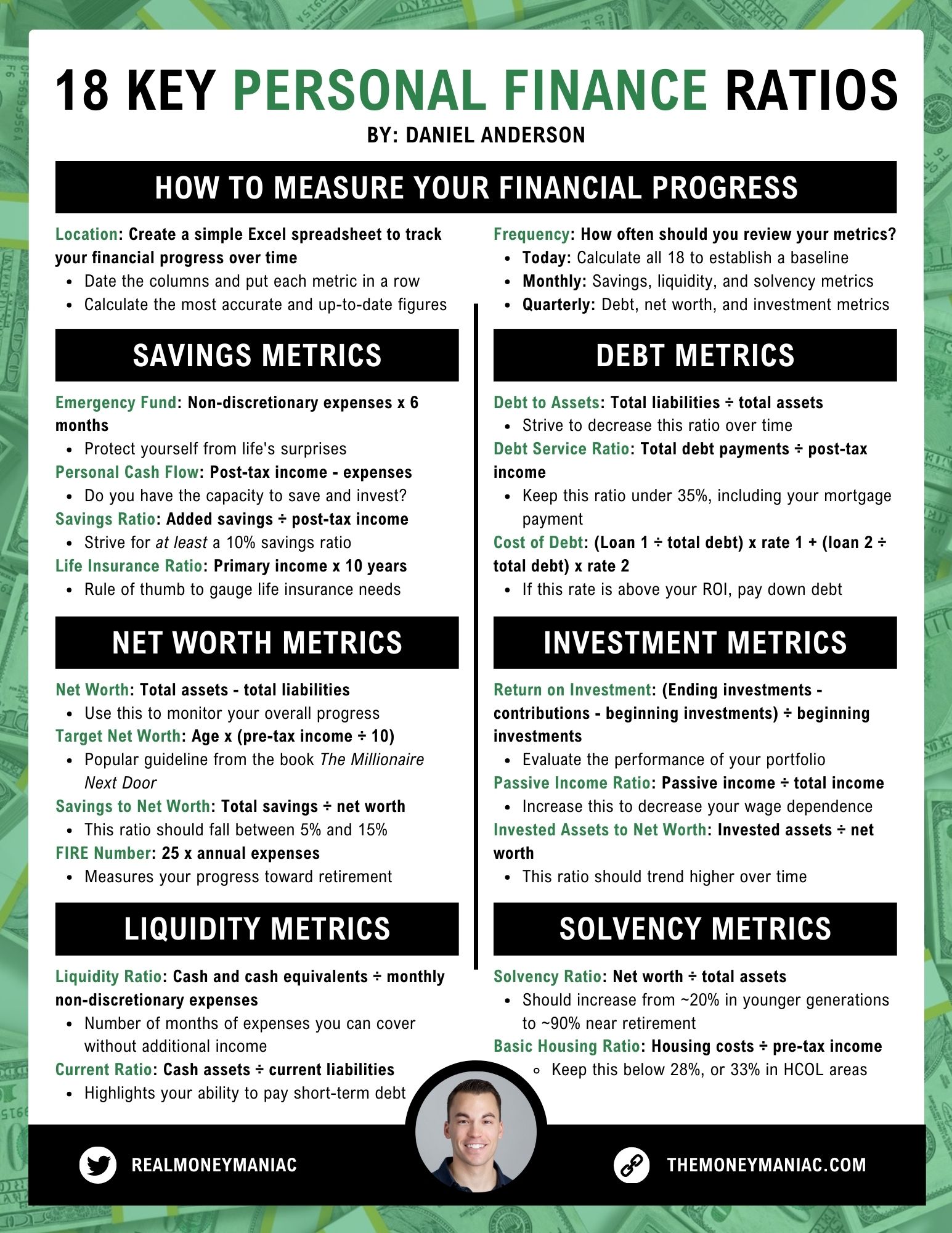Do you ever wonder if you're overspending on your lifestyle? Or if you are on track to achieve your financial goals?
Of course, you do! It's human nature to wonder, to question, to sometimes second-guess our choices.
Fortunately, there's a simple way to remove that guesswork. And a way to move from the uncertain "I think" to the confident "I know."
Enter: Personal Finance Metrics
Think of them as your financial GPS, guiding you through saving and investing decisions. They help turn numbers into insights, so you can make better choices in your everyday life and avoid impulse spending.
These metrics will tell you:
- The ideal amount you should be spending on housing
- Whether you’re saving enough for emergencies
- If you’re pacing toward a comfortable retirement
- And much more!
There are 18 key personal finance metrics worth tracking. And they can be broken up into 6 categories: savings, debt, net worth, investment, liquidity, and solvency.
On the savings front, we have:
- Emergency fund: Non-discretionary expenses x 6 months
- Personal cash flow: After-tax income - expenses
- Savings ratio: Added savings ÷ after-tax income
- Life insurance ratio: Primary income x 10 years
On the debt side, there are:
- Debt to assets: Total liabilities ÷ total assets
- Debt service ratio: Total debt payments ÷ after-tax income
- Cost of debt: (Loan 1 ÷ total debt) x (interest rate 1) + (loan 2 ÷ total debt) x (interest rate 2)
To track your net worth, look at:
- Net worth: Total assets - total liabilities
- Target net worth: Age x (pre-tax income ÷ 10)
- Savings to net worth: Total savings ÷ net worth
- FIRE number: 25 x annual expenses
For your investments, we have:
- ROI: (Ending investments - contributions - beginning investments) ÷ beginning investments
- Passive income ratio: Passive income ÷ total income
- Invested assets to net worth: Invested assets ÷ net worth
To monitor liquidity, look at:
- Liquidity ratio: Cash and cash equivalents ÷ monthly non-discretionary expenses
- Current ratio: Cash assets ÷ current liabilities
And finally, for solvency, track these metrics:
- Solvency ratio: Net worth ÷ total assets
- Basic housing ratio: Housing costs ÷ pre-tax income
Much like a business tracks its key performance indicators (KPIs) to measure success, these ratios are your personal KPIs to ensure you're on the right financial path.
But you probably don’t need to refresh all 18 metrics every quarter. Focus on those that change regularly like liquidity and savings. All others can be updated once or twice per year.
At first, the numbers might not add much value. But with time and regular tracking, you'll begin to see patterns, understand your habits better, and gain a clearer picture of your overall financial health.
Ultimately, these metrics will serve as a reflection of your financial story. They will highlight areas of strength and help you pinpoint areas where there's room for improvement.

To make the process as simple as possible, keep your numbers in Excel or a Google Sheet. And save this image as a simple reference for every future checkup.
But remember, the journey to financial freedom is a marathon, not a sprint. Use these personal finance metrics to keep on the right path, avoid common pitfalls, and stay aligned with your goals.
© 2025 Benzinga.com. Benzinga does not provide investment advice. All rights reserved.
Trade confidently with insights and alerts from analyst ratings, free reports and breaking news that affects the stocks you care about.